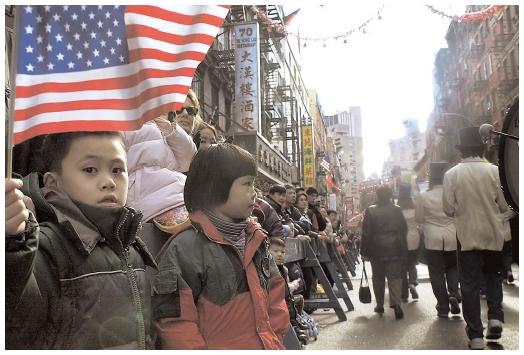There is a person out there who resembles me. She has given me the best of times and the worst of times. Together with our identical smiles and outlandish twin powers, we can charm the pants off anyone and render their minds haywire. We are a dangerous duo as an army of two. However, we are not double trouble but twice blessed. We have the ultimate soulmate and a best friend forever. Nevertheless, being a twin can be frustrating and obscures my individual identity at times.
In my reflection, paper, I discuss how my identity is shaped by my twin sister, and evidence the layers of influence across time and place. I hope the paper can elucidate the story of twin-hood through my eyes. More importantly, I hope the paper can reflect what I have learned this quarter in class, regardless of the fact that I am a twin. While I may be a twin, I am also one of a kind. I am an individual. Over the past 10 weeks, I have learned a bajillion names for calling multiracial people--mulatto, oreo, banana, etc. I have seen the faces of a bajillion more multiracial people and hear their stories-- Obama, Woods, Ethnic Man, the students in the class, etc. Milking these experiences, I have learned that everyone should be given a chance to self-identity and live their lives in comfort from faulty assumptions.
In a nation where there is a rapidly increasing mixed race population, it comes to no surprise that more and more babies are born to mixed race parents. What are the social implications of their births? How do they add or detract from identity formation in America? Obama provides a model for them. From his 1995 book, Dreams From My Father: A Story of Race and Inheritance, to his extraordinary talks on race, he has maintained his multiracial identity in the forefront while identifying as black. By doing so, he demonstrates that it is possible to embrace one reality without ignoring another.
Twins Ryan and Leo Gerth were born on July 11, 2008 to their black, Ghanian mom Florence and white dad Stephan in Lichtenberg, Germany. The press is having a field day and the public is showing mass hysteria over such a dichotomy. Although one twin looks more white and one more black, they can have both black and white features and certainly black and white experiences. Skin color is only factor affecting how an individual thinks and behaves.
Remi and Kian Horder-Hodgson of Nottingham, UK

These twins are deemed "miracles" and media, neighbors, family all obsess over their difference in skin colors. The Daily Telegraph refers to them as “one black and one white.” The paper also voices that “experts say the chance of twins being born with such different physical characteristics is about a million to one.
The fascination with these twins says a lot about the way our society perceives race. We are all very intent on forcing people into neat little categories despite our promise to respect multi-raciality. It is remarkable how much phenotype - especially skin color - can distort our views. People were making it seem as if the twin sisters looked nothing alike when in reality, their features were very similar. It was simply a matter of skin tone. People tend to overlook that the other twin had European facial features as well. Most people simply could not see beyond the child’s dark skin, even though this rests on just a matter of genetic variation.
As a twin, I know how frustrating it can be when people assume differences between my sister and me when such claims are not validated. One twin has to be the evil twin, the other the angel. One twin becomes the more desirable one: taller, prettier, resembling more like the parents. Race and skin color do not have to add to this pot of already vexing experiences for twins. Twins may have different skin tones but they come from the same parents, so there is nothing innately different about them. Lumping racial attributes to twins is simply foolish, just like stereotyping individuals in society as markers of some racial group.
Let's go beyond race and acknowledge that twins are individuals, as are all of us.
The Horder-Dodgson twins' mother, Kylie Hodgson assured London's Daily Mail, "It (the difference in skin colors) doesn't matter to us -- they are just our two gorgeous little girls."
What a wonderful mother.













